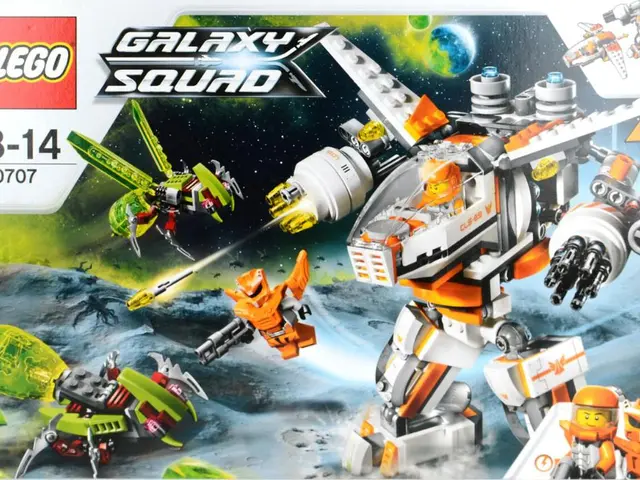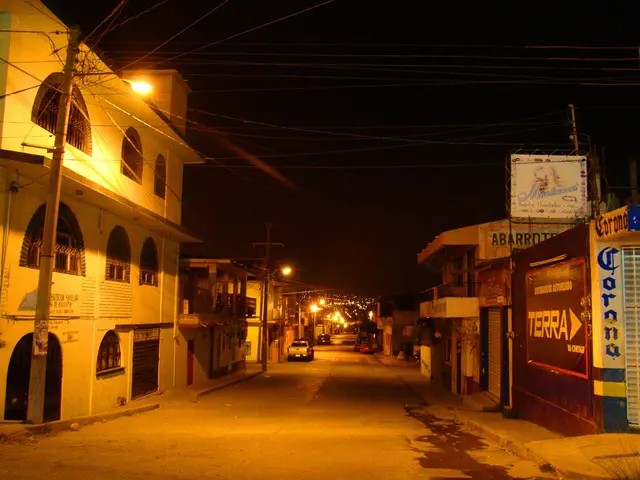Gold Rush in the Amazon: A Disaster in the Making
Gold surge in the Amazon: Unprecedented mining activity fuels environmental degradation and conflicts - Gold Mining Frenzy Sweeps Amazon Region
The Amazon rainforest, a sprawling green mass from above, might seem like an untouched oasis. However, a closer look reveals the devastating consequences of the recent gold rush in its indigenous territories. Instead of lush greenery, one spots barren land, pits, and rusty pools of water. This once impenetrable rainforest is now littered with the scars of illegal mining, often contaminated with pollutants, turning it into wasteland.
"I am deeply worried. If they continue at this pace and engage in mining in our territories, they will destroy nature, with impacts that the entire world will feel," says Raoni Metuktire, chief of the Kayapó people, speaking to the German Press Agency. Metuktire, a symbolic figure for his decades-long fight to preserve the Amazon rainforest and indigenous cultures, expresses his concerns over the rampant mining activities.
Despite containment measures implemented by the current government of President Luiz Inácio Lula da Silva against illegal gold mining on indigenous land, mining activities have not dwindled - they have merely shifted from one territory to another.
Environmental organization Greenpeace has documented gold mining activities in four major indigenous territories in northern Brazil for years, utilizing satellite data and flights for both data collection and journalistic investigations. Although illegal mining has decreased in the Yanomami region by 7 percent, the Munduruku region by 57 percent, and the Kayapó region by 31 percent between 2023 and 2024, it has skyrocketed in the Sararé region by 93 percent. Over the last two years alone, 4,219 hectares of rainforest have been destroyed by gold miners in these areas, an area comparable to half the size of Manhattan in New York City, USA.
The environmental destruction caused by illegal gold seekers, known locally as garimpeiros, is catastrophic. They invade protected territories, set up camps, clear expanses of forest, and dig deep holes in search of gold. From the air, machinery and equipment like excavators and pumps can be seen scattered across the landscape. Approaching these miners can be dangerous as they are aware of the illegality of their activities and may be armed.
When the miners strike gold, they use large quantities of highly toxic chemicals like mercury to extract the gold from the rock. This toxic substance then pollutes the water, often causing mass fish kills. Indigenous communities living in these areas are at risk of suffering long-term neurological damage. According to Harald Gross, a forest protection expert at Greenpeace, "Exposure to mercury can result in eye disorders, learning and development disorders in children." A study published last year by the national research institution Oswaldo Cruz Foundation revealed that 84 percent of the population in nine Yanomami villages were exposed to elevated mercury levels.
Illegal gold mining is often connected to criminal networks associated with drug cartels, leading to acts of violence and deadly attacks against indigenous people. Not infrequently, these miners are victims of human trafficking themselves.
While the business can be lucrative for workers, limited job options often leave them with little choice. According to a United Nations Office on Drugs and Crime (UNODC) study in Brazil, up to 40 percent of gold miners in the Amazon region could be victims of human trafficking and forced labor.
The rising global demand for gold is fueling illegal mining in the Amazon region. The gold is smuggled through obscure supply chains, often blended with gold from legal mines and sold through intermediaries before it enters the international market. "The gold goes through so many hands and is repeatedly remelted, making it challenging to trace its origin," says Gross.
Brazil is under the international spotlight this year, as the World Climate Conference COP30 is set to take place in the Amazonian city of Belém in November. Unlike his predecessor, President Jair Bolsonaro, who advocated for exploitation of the Amazon region and permitted gold mining in indigenous areas, Lula had pledged to strengthen environmental and climate protection. Environmental agency Ibama conducts regular raids in which gold mining equipment is destroyed. However, according to Greenpeace, sustained and continued monitoring and control are needed to prevent miners from returning once the measures have ended. Transparency in the supply chain is essential to curb illegal mining activities.
- The Kayapó people, residing in the Amazon rainforest, have expressed their concerns about the escalating gold rush in their territories, urging President Luiz Inácio Lula da Silva to strengthen his employment policy to prevent illegal mining activities.
- Environmental organization Greenpeace has reported an alarming increase in gold mining activities in the Sararé region, despite declines in other indigenous territories, such as the Munduruku region, Kayapó region, and Yanomami region. This surge in mining activities threatens the preservation of the Amazon rainforest and the health of indigenous communities.
- The global demand for gold contributes to the proliferation of illegal mining in the Amazon region, as smuggled gold is often blended with gold from legal mines and sold through complex, opaque supply chains, making it difficult to trace its origin and combat the illegal mining activities.








